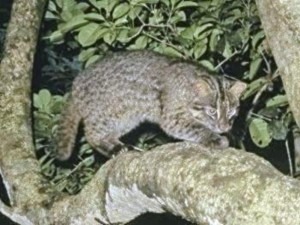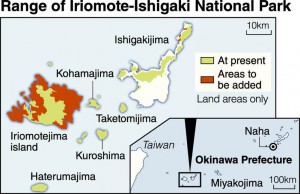The Yomiuri Shimbun, February 18, 2016

The Environment Ministry plans to expand the range of Iriomote-Ishigaki National Park to include the entirety of Iriomotejima island, a total of about 29,000 hectares, according to sources. The park currently comprises parts of Iriomotejima island and other areas in Okinawa Prefecture. The ministry will decide on the policy in its Central Environment Council soon and announce it in an official journal around late March.

Currently, one-third of Iriomotejima, or about 10,800 hectares, is designated as the national park. By expanding the area, the ministry intends to strengthen its protection of rare animals, including Iriomote wild cats (see below), an endangered species designated as a special natural treasure, and preserve the original ecosystem on Iriomotejima.
The government aims to have the Amami-Ryukyu region, including Iriometejima, registered as a UNESCO World Natural Heritage site. Making the whole island a national park is also meant to promote that effort, the sources said.
According to the ministry, the island’s special protection district will be expanded to about 4,600 hectares from the current about 1,800 hectares. Even taking home fallen leaves is prohibited in this area. The ministry also plans to designate about 14,600 hectares, or about half of the island, as a class 1 special district where building construction is not allowed in principle.
There are five grades of regulation in national parks’ land areas. Regulations are strictest in special protection districts, followed by class 1, class 2 and class 3 special districts. Regulations in ordinary districts are the most loosely enforced.
Iriomote wild cats are wild cats that live only on Iriomotejima island. Adults are about 60 centimeters long, weigh three to five kilograms and eat such animals as lizards, frogs and prawns. About 100 cats are estimated to live on Iriomotejima. They are designated as a class-1A endangered species, which faces the highest danger of extinction.





